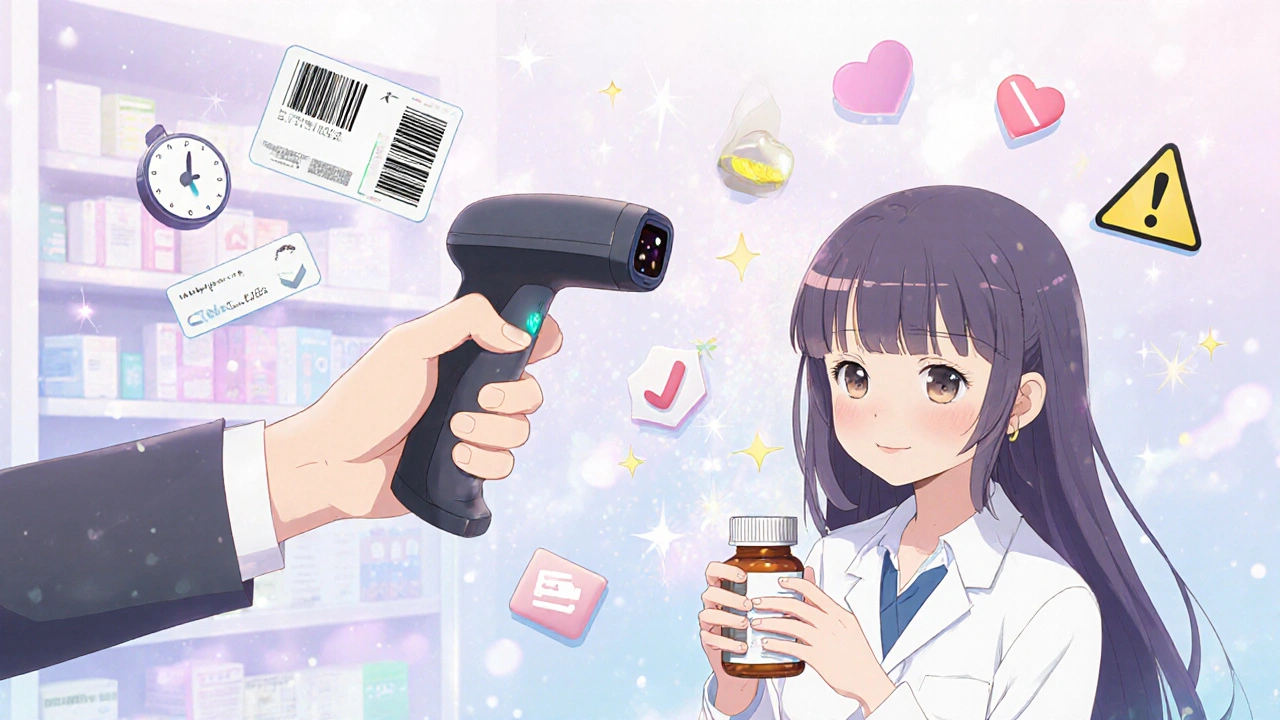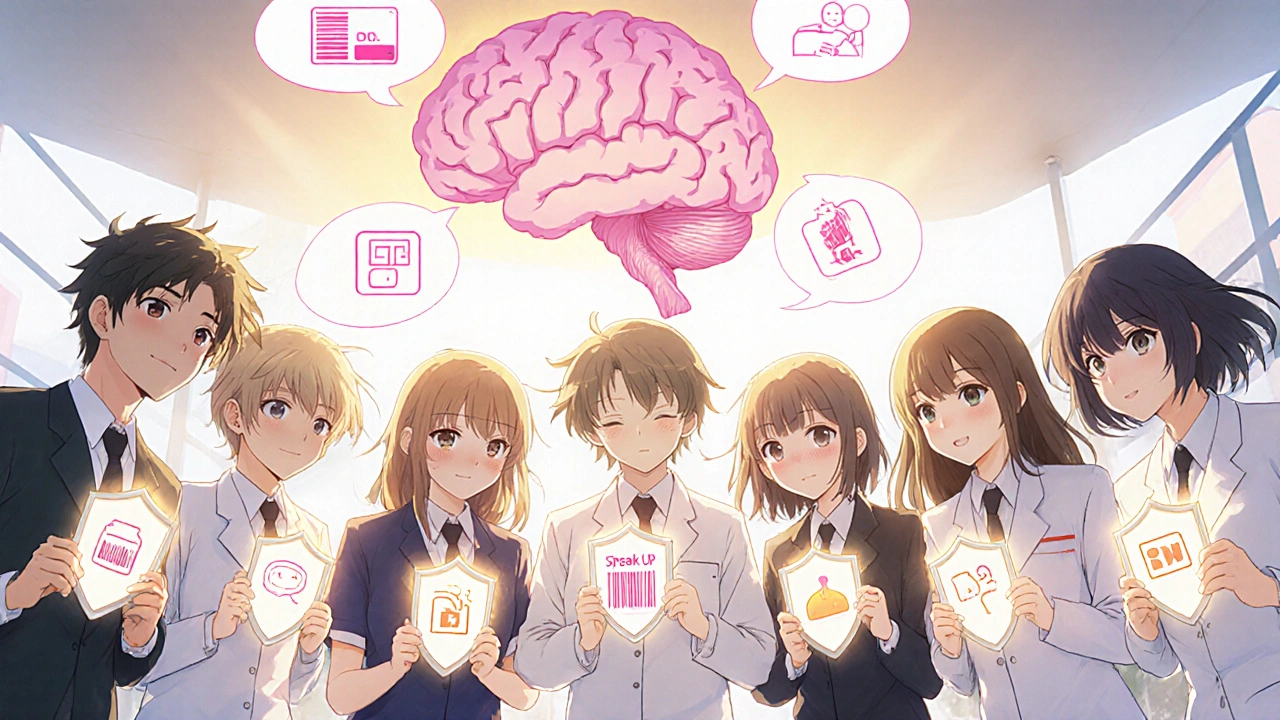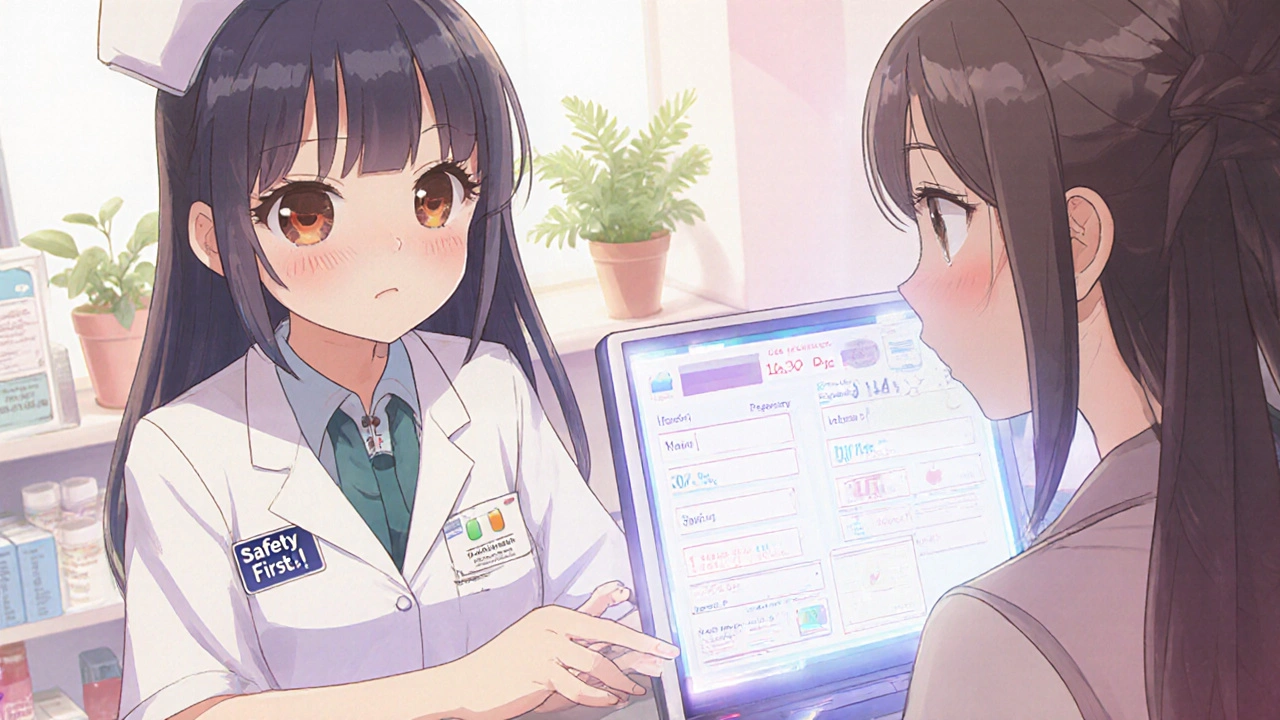Why Wrong-Patient Errors Happen at the Pharmacy
Imagine walking up to the pharmacy counter, handing over your prescription, and walking away with someone else’s medication. It sounds impossible-but it happens more often than you think. Wrong-patient errors occur when a pharmacist or technician gives a prescription to the wrong person. This isn’t just a mix-up-it’s a life-threatening mistake. A patient might get a blood thinner instead of their diabetes pill, or an antibiotic they’re allergic to. The consequences? Emergency room visits, hospitalizations, even death.
The root cause isn’t usually laziness or incompetence. It’s system failure. Busy pharmacies, similar-sounding names (like Linda Smith and Linda Smyth), rushed pick-ups, and overworked staff create perfect conditions for errors. According to the Institute for Safe Medication Practices, these are among the most dangerous types of medication mistakes because they’re often missed until it’s too late.
Two Identifiers: The Bare Minimum
Every pharmacy should require two pieces of information to confirm a patient’s identity before handing over any prescription. That means asking for full name and date of birth. Not just the first name. Not just the last name. Full legal name. Full date of birth.
This isn’t a suggestion-it’s a standard. The Joint Commission, the National Association of Boards of Pharmacy, and major chains like CVS, Walgreens, and Walmart all require it. But here’s the problem: many pharmacies only ask for the name. Or they ask, but don’t actually check it against the system. A 2022 Pharmacy Times analysis found that pharmacies using only name verification still had 3-4 wrong-patient errors per month. Those that enforced dual-identifier verification cut that to less than one per year.
It’s simple: if the name on the prescription doesn’t match the name the person gives you, stop. Don’t assume it’s a nickname. Don’t assume they’re related to the patient. Don’t rush. Ask again. Verify. Record it. This one step alone can prevent nearly half of all wrong-patient errors.
Barcode Scanning: The Game Changer
Barcode scanning isn’t just for groceries. In pharmacies, it’s a lifesaver. When a patient arrives, they scan a barcode on their ID card, phone app, or even a wristband. The system checks: Is this person linked to this prescription? If not, the system won’t let the prescription be dispensed.
Walgreens rolled out barcode scanning across 9,000 stores in 2021. Within 18 months, wrong-patient errors dropped by 63%. That’s not luck-that’s technology working as designed. Hospitals using RFID wristbands saw even bigger drops: 78% fewer errors. These systems don’t just reduce mistakes-they create a digital paper trail. Every verification is logged. Every mismatch is flagged.
Cost is a barrier for small pharmacies. Hardware and software can run $15,000 to $50,000 per location. But consider this: the average wrong-patient error costs an independent pharmacy over $12,500 in legal fees, fines, and lost trust. One error can wipe out the cost of the system. And with Medicare penalizing pharmacies that have error rates above 0.5%, the financial risk of not upgrading is growing fast.

Patient Counseling: The Final Safety Net
Even with scanners and ID checks, mistakes can slip through. That’s where counseling comes in. When the pharmacist hands the medication to the patient, they should ask: “Is this your first time taking this?” “Do you know why you’re on it?” “Have you had this before?”
It’s not just about giving instructions-it’s about verification. Pharmacy Times reports that 83% of dispensing errors are caught during this final conversation. A patient might say, “I don’t take this pill,” or “My doctor never prescribed this.” That’s your cue to stop, check, and re-verify.
Some patients get annoyed. Especially older adults who’ve been going to the same pharmacy for 20 years. They say, “You know me!” But safety isn’t about familiarity-it’s about accuracy. A 2024 ECRI survey found that 68% of patients appreciate these questions. They feel safer. The key? Train staff to explain why they’re asking. “We’re doing this to make sure you get the right medicine-no matter how long you’ve been coming here.”
Technology Is Not Enough
Some pharmacies think buying a fancy scanner or biometric system will fix everything. It won’t. Technology is only as good as the people using it.
A Walgreens pharmacist in Texas told Pharmacy Times in March 2025 that during rush hours, staff feel pressured to skip the scan. “We get 50 people lined up. Someone’s in a hurry. The scanner beeps slow. So we just say, ‘Yeah, it’s you.’” That’s how errors happen.
The real solution? Culture. Staff must feel empowered to stop the process if anything feels off. A technician should be able to say, “I’m not comfortable with this,” without fear of being yelled at. A manager should support that. The American Society of Health-System Pharmacists says this is a Category A recommendation-the highest level of evidence. It’s not optional.
At Kroger Health, they trained every staff member to be a safety watchdog. No one is too junior to speak up. Result? Zero wrong-patient errors for 18 months straight across 2,200 pharmacies.

What’s Next? Biometrics and AI
The future is here. Walgreens started testing fingerprint verification in 500 locations in January 2025. Preliminary results show 92% accuracy. But privacy concerns are slowing rollout. Patients don’t want their fingerprints stored in a pharmacy database.
Other companies are testing voice recognition and facial matching. Dr. Robert99 from Lumistry predicts 70% of pharmacies will use AI-assisted identification by 2027. These systems could match a patient’s face or voice to their record in seconds, cutting errors to near zero.
But even these tools won’t replace human judgment. The best systems combine tech with trained staff who know when to question, when to pause, and when to say, “Let me double-check.”
How to Implement This in Your Pharmacy
If you’re running a pharmacy, here’s how to start:
- Require dual identifiers-name and date of birth-for every single pick-up. No exceptions.
- Train everyone-techs, pharmacists, even front desk staff. Use 4-6 hours of mandatory training. Make it real: role-play common mistakes.
- Install barcode scanning if you can. Even if you’re small, look into low-cost options like mobile scanners paired with cloud-based systems.
- Start counseling-not as a formality, but as a safety check. Teach staff how to explain it to patients without sounding robotic.
- Encourage speaking up. Create a no-blame culture. If someone catches a near-miss, celebrate it. Log it. Learn from it.
- Track everything. Use software like Lumistry or PioneerRx to log every verification attempt. If you see a pattern-say, same name, different DOB-investigate.
It takes 90 days to fully implement these changes. But the payoff? Zero wrong-patient errors. Fewer lawsuits. Happier patients. And peace of mind.
What Patients Can Do
You’re not powerless. If you pick up prescriptions:
- Always carry your ID with your full name and DOB.
- Don’t be afraid to say, “Can you check that this is mine?”
- Read the label. Does the drug name match what your doctor told you?
- If something feels off-ask. You’re not being difficult. You’re protecting your life.
Medication safety isn’t just the pharmacist’s job. It’s a team effort. And you’re part of the team.

Matthew McCraney
November 21, 2025 AT 09:03serge jane
November 23, 2025 AT 00:40Brianna Groleau
November 24, 2025 AT 07:00Rusty Thomas
November 25, 2025 AT 21:07Sarah Swiatek
November 27, 2025 AT 20:48Dave Wooldridge
November 28, 2025 AT 06:08Rebecca Cosenza
November 28, 2025 AT 19:44